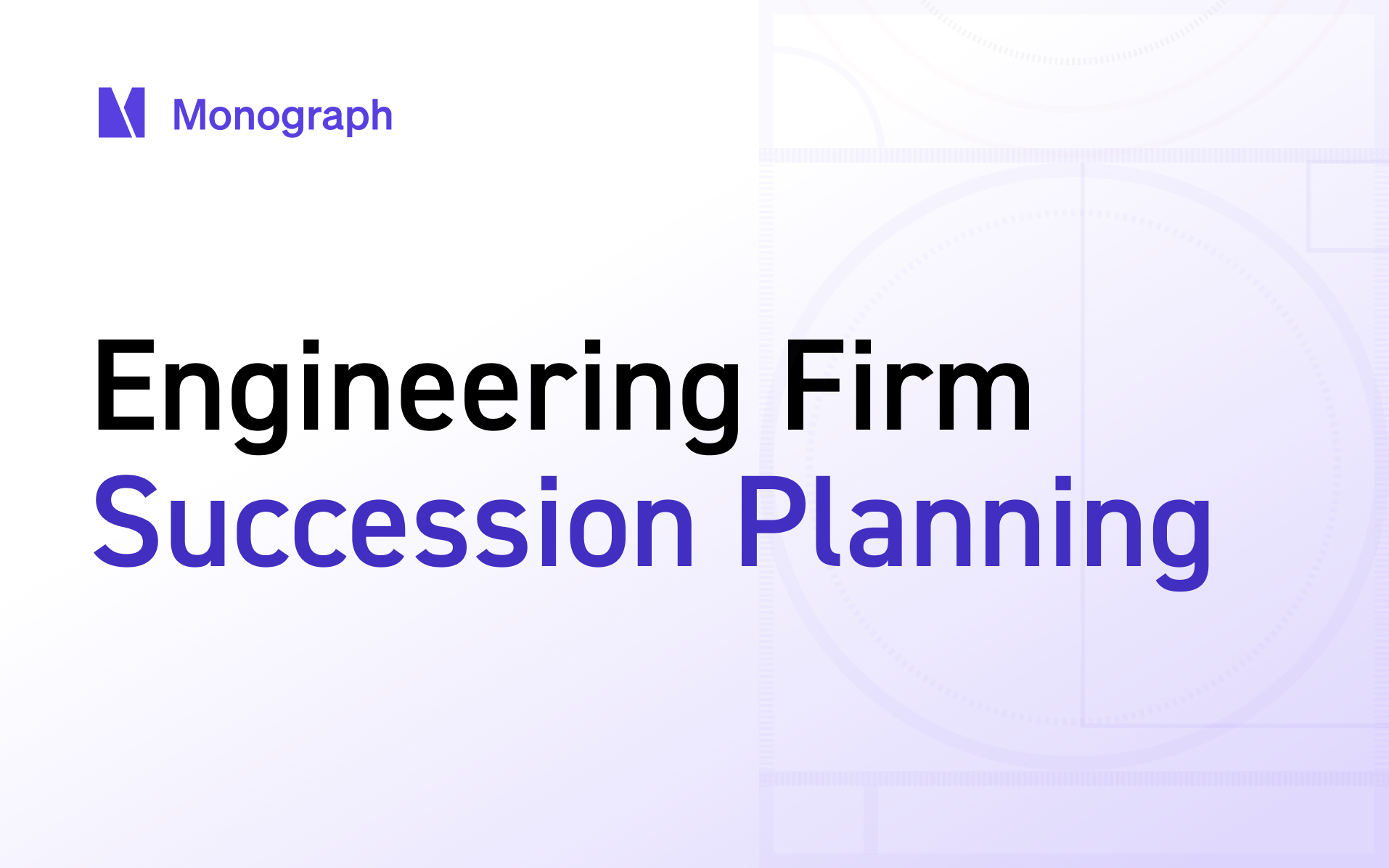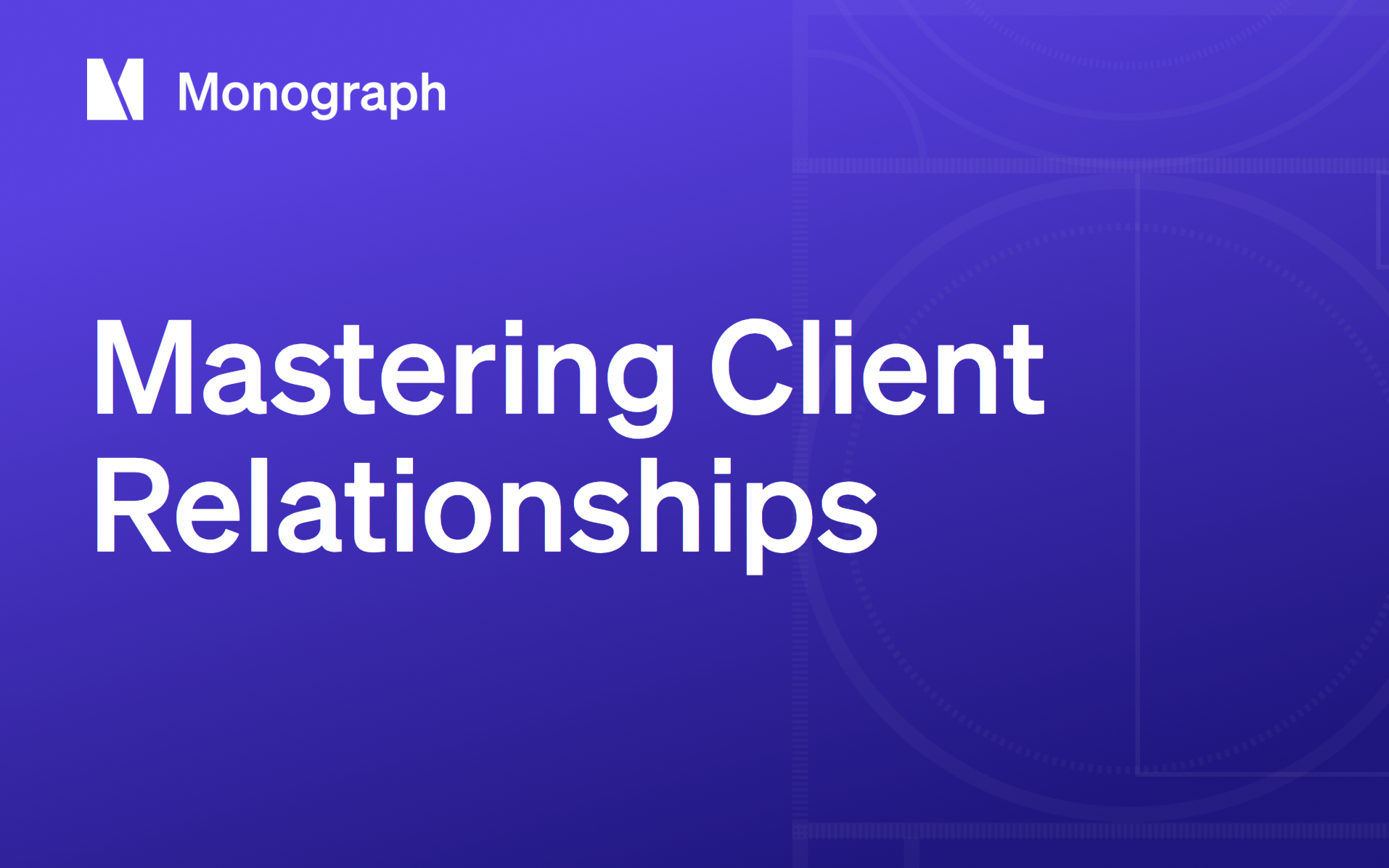Contents
Leading a thriving engineering firm means building a business that runs smoothly. The best directors figure out how to scale their expertise and create systems that work without constant oversight.
A senior engineer announcing retirement poses a significant operational challenge. You may miss key context on your biggest projects, lose valuable developer and MEP relationships, or watch your mentoring programs suffer.
Engineering leaders must maintain technical excellence while keeping a keen eye on the future. The four-step engineering firm succession planning framework below explains how to protect the systems that keep your firm running, come what may.
Why You Need To Think About Succession
Your top engineers bring value to your firm beyond utilization rates or billable hours—they bring experience and instinct. The veterans spot project risks earlier, placate tricky customers more smoothly, and keep change orders from destroying your budgets.
When good engineers leave, questions are raised:
- Which projects will start bleeding money without proper oversight?
- How do you maintain visibility into profitability if you’re lacking context?
- Who will coordinate consultants and prevent project delays?
Engineering project success needs the technical work and business management to work in harmony. Leadership continuity means maintaining project health visibility, preserving client relationships and managing consultants.
Business Succession Planning Essentials
Before diving into the full framework, here are the core principles that guide effective succession planning:
- Identify critical roles and assess capabilities. You need to know who handles what, across financials, relationships, and project management.
- Look at your current team practically. Can your senior structural engineer pull up project financials and interpret what they're seeing? Does your project manager understand consultant billing well enough to catch problems before they hit your bottom line?
- Document the business processes that keep projects on track. Capture how projects are monitored, how client relationships stay healthy, and how consultant coordination works smoothly.
- Set up a transition that puts business stability first. Ensure project oversight never has gaps. Maintain operational visibility for good decision-making.
- Track what matters during transition. Monograph's dashboard gives leaders real-time snapshots of utilization rates, net profit, and projected operating profit.
These principles come together in a systematic four-step approach that protects your firm's future.
The Four-Step Engineering Firm Succession Plan
- Figure Out Who Does What
Before drawing org charts, clarify what a transition might look like when projects are running and clients are calling.
- Project Financial Oversight: Who keeps tabs on project financials in ways that catch problems before disasters?
- Client Relationship Management: Which principals manage relationships with clients who generate profitable repeat work? Which jobs depend more on the people than the companies? Are any existing clients likely to split too?
- Consultant Coordination: Who coordinates communication between architects, MEP engineers, and specialty consultants?
Approach your principals, project managers, and client-facing people with specific questions: Which projects would start losing money if this person left tomorrow? Which business processes would break down without this person coordinating things?
Monograph's unified data ecosystem reveals which principals oversee your most profitable projects, how client relationships are distributed, and where operations might be more fragile than they appear.
- Identify Top Talent and Develop Their Skills
Once you know which roles matter most, evaluate your current team's ability to handle responsibility. Give promising people the reins on project outcomes while support is still available.
Sharing direct responsibility for project results will help you identify employees with the highest potential for success. Your best candidates will combine solid technical skills with proven business acumen.
Engineers who can analyze financial data, track utilization rates, and monitor operational reports show they're thinking about the bigger picture. Help them learn best practices for fee negotiations, project budget reviews, and consultant management, alongside your leaders.
- Document Knowledge and Plan the Transfer
Think of business process documentation like detailed project handoff notes—another professional should be able to take over work without pause.
Start by documenting practices that prevent expensive mistakes. When your principal engineer identifies that a hospital project budget is heading toward trouble, capture how they interpreted the situation and the actions they took to fix problems.
A comprehensive handoff checklist includes:
- Current project financial status.
- Client relationship history.
- Consultant coordination procedures.
- Business development activities.
- Fee structures.
- Cash flow management approaches.
Evaluate a potential successor's ability to handle business oversight and identify gaps in client management capability at least six months out. Then, two months out, begin transitioning responsibility for financial oversight of new projects to the successor.
Help them learn business competency through project budget discussions where real decisions get made. Let them lead conversations about project economics while you provide backup. After all, clients need to see that their new contact understands what makes projects successful.
Monograph's role-based permissions enable gradual expansion of access and responsibility. Incoming leaders can begin with limited access and gradually assume full operational control. Use the platform's standardized templates to preserve institutional knowledge.
- Execute and Monitor the Transition
A smooth transition means financial performance and day-to-day operations continue running without disruption. Roll out senior transitions gradually—start with smaller projects or less complex client relationships where the learning curve isn’t steep.
After formal transition, plan regular check-ins. Track the business patterns that matter for long-term firm health:
- Are projects staying on budget?
- Are clients satisfied?
- Is consultant coordination working?
You’re looking for solid financial decision-making, the trust of clients and consultants, and strategic thinking that balances short-term needs with long-term goals.
Engineering firms that handle succession effectively approach the transition like any complex project—setting clear performance expectations, monitoring progress regularly, and implementing systematic quality control.
Future-Proof Your Firm
If you start succession planning when someone announces retirement, you're behind the curve. Treat succession like ongoing maintenance, and choose the right systems.
Leadership development becomes part of your annual planning—start identifying potential successors long before you need them. Give top performers enough time to develop the right skills and experience. Early identification means successors are more likely to balance business management and technical competency.
Consistency is key. Make these steps as routine as financial reporting. Your firm's competitive position and future operational capability depend on the business leaders you're developing right now.
Plan Smooth Firm Succession With Monograph
Engineering succession planning is about starting early, documenting systematically, and developing your next generation of leaders before you need them.
Monograph helps engineering firms break down knowledge silos by centralizing project data, client histories, and financial insights in one easy-to-use platform. When key people leave, the information you need stays captured in standardized workflows and dashboards.
Your firm's future depends on the continuity you build today. Get started with Monograph.
Frequently Asked Questions
How far in advance should we start succession planning?
Start identifying potential successors at least 18 months before you need them. This gives enough time for business skill development and gradual responsibility transfer without rushing critical transitions.
What if we don't have obvious internal candidates for key roles?
Focus first on documenting processes and identifying external relationships that need preservation. Then expand your search to include developing high-potential staff or strategic external hires who can grow into leadership roles.
How do we handle succession when someone leaves unexpectedly?
This is why documentation and cross-training matter. Have your critical processes captured and ensure at least two people understand each major client relationship and project oversight responsibility.
Should we tell clients about upcoming leadership transitions?
Yes, but with a plan. Introduce successors gradually through joint meetings and project involvement. Clients need confidence that business relationships and project oversight will continue seamlessly.





